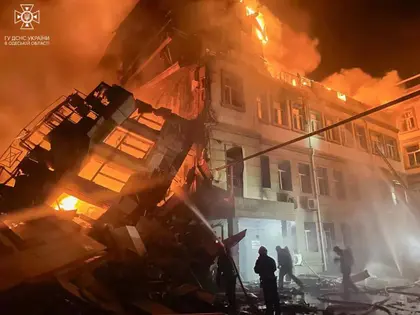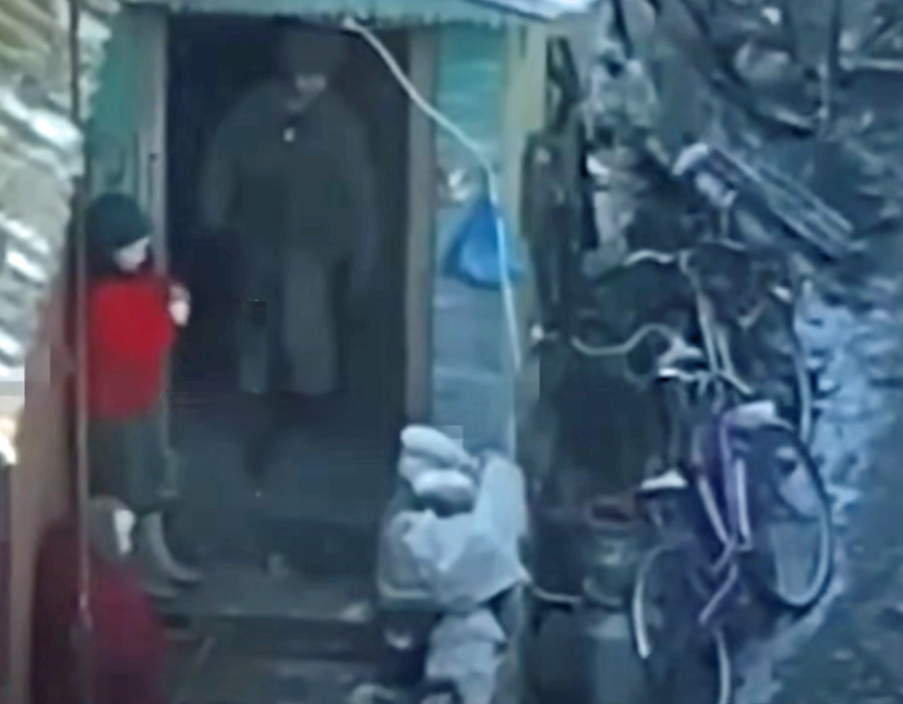Odesa has suffered hundreds of Russian attacks since Feb. 24, 2022. But from July. 18 to 20 it was the target of an unprecedented, three straight nights of intense missile and drone strikes, all concentrated on the sea port.
The pattern repeated itself with astonishing precision. The naval missiles and kamikaze drones attacked together, three successive nights, starting at 2:00 a.m., with the all-clear sounding after two hours, around 4 a.m.
- Obtain the most recent updates on the Ukraine situation today.
- Read the newest Ukraine news stories published today.
JOIN US ON TELEGRAM
Follow our coverage of the war on the @Kyivpost_official.
The inhabitants of Odessa who live near the port, which is next to the historic center, felt the walls of their houses and the windows shaking from the shock waves on all three nights.
The first attack, in the early hours of Tuesday, July 18, involved 21 drones and 7 missiles launched from ships in around the Crimean Peninsula. All were shot down over the port.
For those sheltering at home, the detonations and shock waves shook the walls, “as if they had burst on your head,” one resident said.
The damage to the port was superficial, caused by heavy metal fragments that fell on some buildings in the port – in particular a restaurant on the cruise dock and its bulky Odesa Hotel, which had been in disuse for years.
Many residents interpreted this attack as retaliation for damaging a section of the Kerch Bridge in the Crimea and assumed there would be no follow-up. In fact, the attacks were part of what Russia’s own defense ministry described as a “strike of retribution” after Monday’s attack on the Kerch Bridge, AP reported on July 19.

‘A Man of Character’ – Ukraine at War Update for Jan. 10
The second attack – at the same time on Wednesday, July 19 – came with double the missiles and fewer drones. It was welcomed by a deafening concert of anti-aircraft batteries, which shielded the city.
Only minor damage and no casualties were reported.
The situation was worse in the city of Mykolaiv, which also came under attack, and some tourist infrastructure on the coast was destroyed.
The third attack, on Thursday, July 20, was the most severe. A rocket whistled overhead and then hit a large terminal in the historic port of Odesa. A fire developed, which was extinguished after a. few hours.
Just minutes after this first impact, several drones, announced by their now familiar scooter engines, flew over the city and hit an office building near the Chinese Consulate General.
It remains to be seen if Russia will apologize to Beijing for the attack. China has a large consulate right next to the Odesa port, to protect its significant interest in Ukrainian exports.
Following the second explosion, rescuers recovered a body from under the rubble.
The city of Mykolaiv was struck again on Thursday morning as well, with Russian attacks hitting a city hall office.
Yet the attacks are also considered to be linked to the Black Sea Safe Corridor Initiative, signed a year ago with the United Nations and Turkey, from which the Russians withdrew just a few days ago.
At least two takeaways can be gleaned from Russia’s fury:
First, Russia is frustrated for not having obtained advantages from that agreement, such as the restoration of exports of fertilizers through the Togliatti-Odesa gas pipeline and the unblocking of the international payment system for Russian banks, which would allow them to legally export Russian grain.
Second, the threat to Ukraine serves as a reminder that without Russia they will not be able to resume exports.
However, the fact remains that the Russian fleet is no longer master of the Black Sea and can no longer afford to blockade ports, as it did in the first months of the full-scale invasion.
Since Ukraine sank several of its ships, the Russian fleet has been on the defensive and keeping a safe distance from the Ukrainian coast. Nevertheless, their ships still play the role of launch pads for the missiles hitting Ukrainian cities.
You can also highlight the text and press Ctrl + Enter






